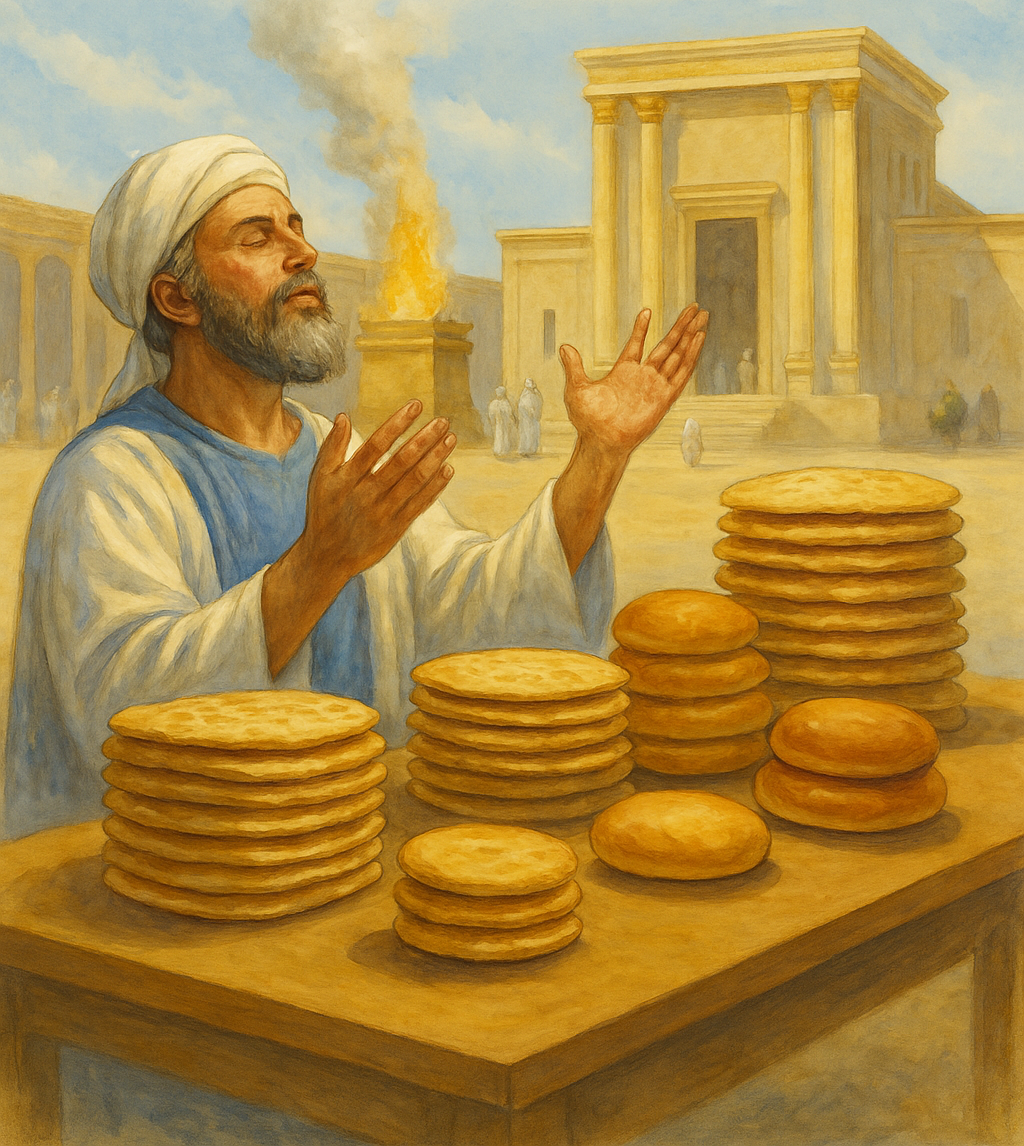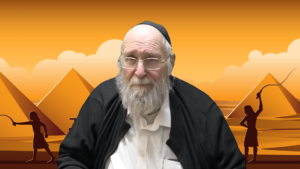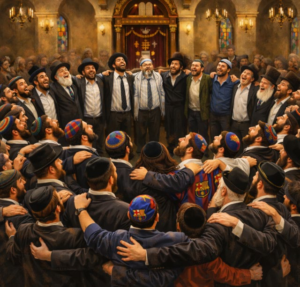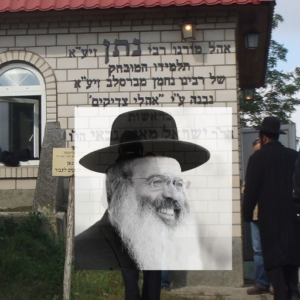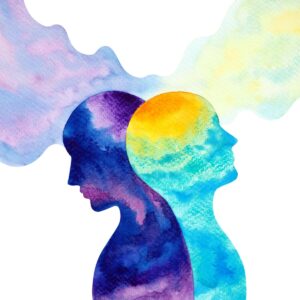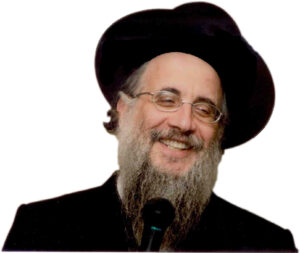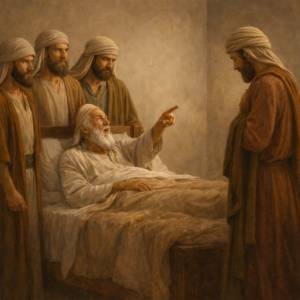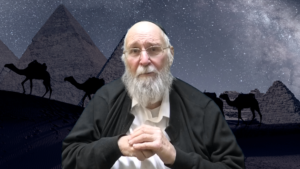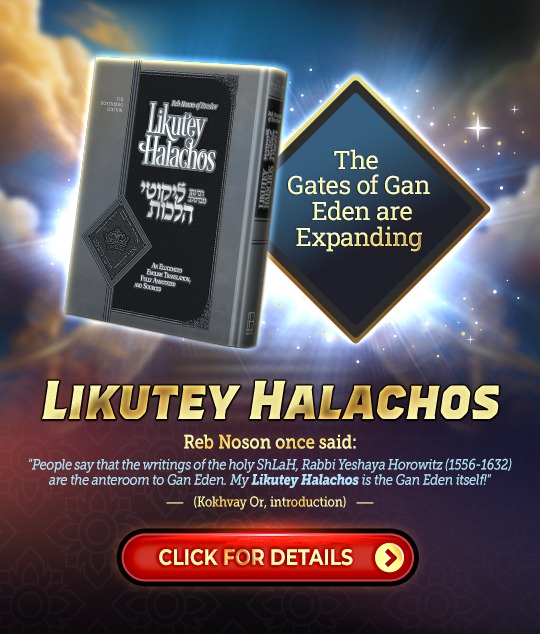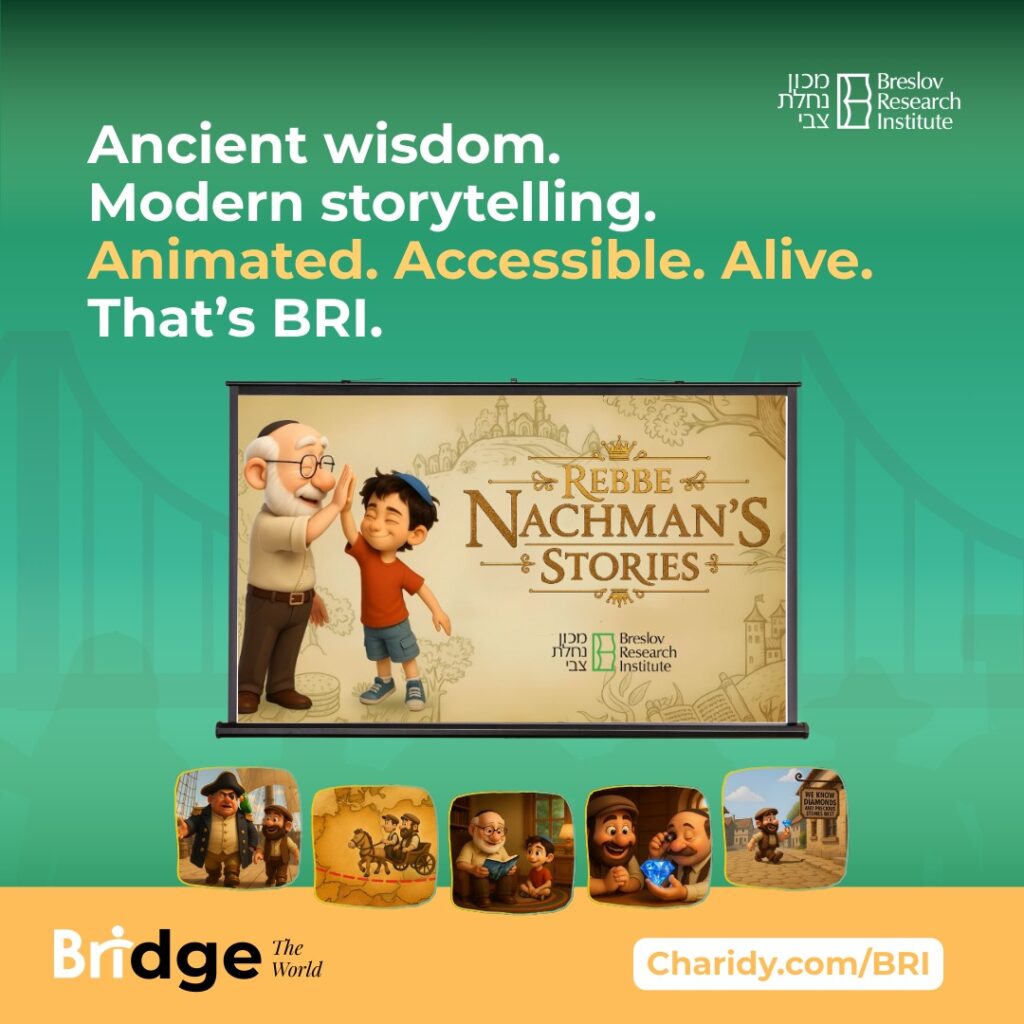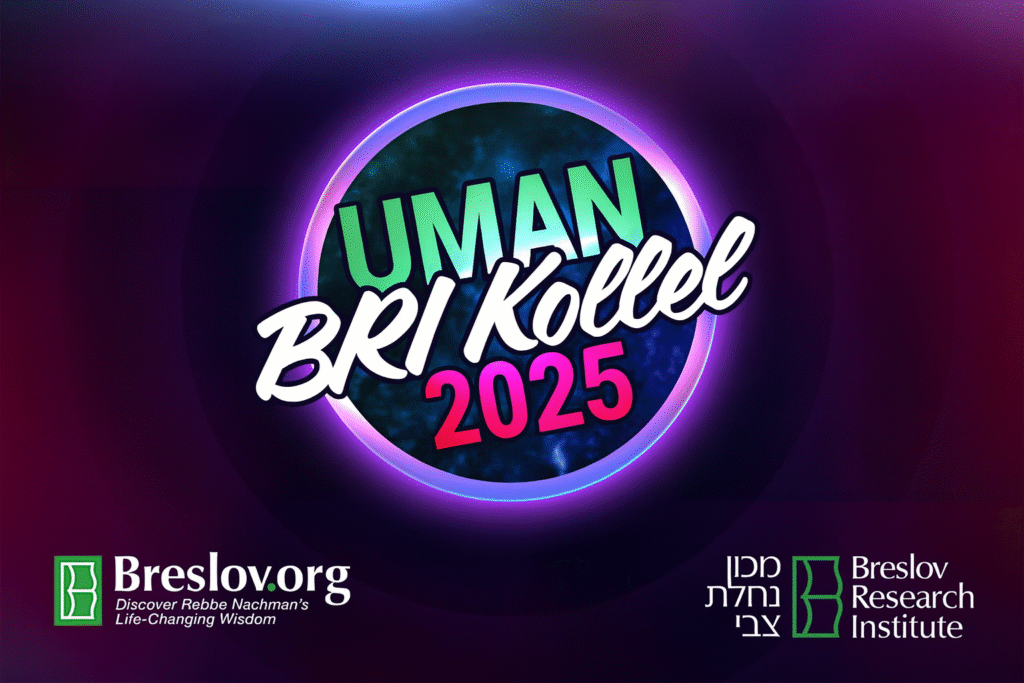- Joy ⬦ Read ⬦ Shabbat ⬦ Weekly Torah Portion ⬦ Wisdom
The Uniqueness of Giving Thanks to Hashem
This week’s Parsha, Tzav, falls on Erev Pesach, connecting two powerful energies: the daily Avodah in the Beit HaMikdash, and the renewal of redemption through the Exodus.
As we saw last week, the Torah lists five types of Mincha offerings that only a poor person would bring. Reb Noson, based on Rebbe Nachman’s teachings in Likutey Moharan 24, reveals that these five correspond to five pathways of accessing joy—each one adapted to different life situations. Of these, the fourth pathway—Hoda’ah, giving thanks—is the most developed form of joy. This week’s Parsha brings that idea to the forefront.
The Five Pathways to Joy
Rebbe Nachman teaches that true joy can be accessed in five primary ways:
- Miley d’Shtuta – Lightness and Humor: Even fake joy is a beginning. Joking, laughter, and acting silly can eventually lead a person to real happiness.
- Music and Dance: Moving the body—clapping hands, listening to music, and dancing—stirs the heart and uplifts the spirit.
- Finding the Good Points: Looking within to find even the smallest good can bring a spark of joy to someone feeling lost or broken.
- Giving Thanks – Hoda’ah: Recognizing and expressing gratitude for the good that is already present.
- Looking to the Future: When the present feels too dark, we can borrow joy from the knowledge that in the end, everything will be made right.
Of these five, Hoda’ah stands out. It’s not reaching for happiness or fabricating it—it’s a response to real kindness. When a person feels genuine gratitude to Hashem, the joy is stable, lasting, and transformative.
Korban Todah – When Gratitude Becomes an Offering
The Korban Todah—the Thanksgiving Offering—expresses this elevated level of simcha. The Torah specifies that four types of people are obligated to bring this offering: someone who was imprisoned, someone who suffered serious illness, someone who traveled overseas, and someone who crossed through a desert. These are the people who also recite Birkat HaGomel today. The acronym of the word “Chayim” (chet-yud-yud-mem) hints to these four:
- Chet – Chavush (imprisoned)
- Yud – Yisurim (afflicted with suffering or illness)
- Yud – Yam (sea travelers)
- Mem – Midbar (desert travelers)
Reb Noson, in Likutey Halachot (Birkat Hoda’ah 6), explains that these categories also represent spiritual states:
- Feeling trapped and unable to serve Hashem—like being imprisoned.
- Being too weak or confused to function—like sickness.
- Experiencing great spiritual highs followed by intense crashes—like a stormy sea.
- Feeling lost, like wandering in a spiritual desert with no direction.
When someone is saved from these inner states—when clarity, energy, and strength return—they’re not just relieved. They’re thankful. That gratitude is so powerful that the Torah says it must be expressed with a Korban Todah.
The Four Breads of the Todah
Unlike other offerings, the Korban Todah comes with a unique accompaniment: forty loaves of bread. Thirty are made from matzah, and ten are chametz. The Torah specifies three matzah types:
- Chalot Matzot Belulot B’Shemen – matzah loaves kneaded with oil
- Rekikei Matzot Meshuchim B’Shemen – flat matzot smeared generously with oil
- Solet Murbechet Chalot Belulot B’Shemen – soft, boiled dough similar to a bagel, made with oil
And finally:
- Lechem Chametz – leavened bread, baked normally
These accompany the animal offering of the Korban Todah. While two of these breads echo offerings from last week’s Minchat Ani (the pauper’s meal offering), two are entirely unique to the Todah. This reflects how giving thanks—hoda’ah—is its own level of spiritual service, born out of real joy.
There is something beyond the struggle. There is light at the end of the exile.
The Pinnacle of Simcha: Giving Thanks
Reb Noson explains that the highest expression of joy is hoda’ah—thanksgiving. Even the joy found in performing mitzvot is meant to lead to a heart of gratitude. Whether one reaches joy through dancing, finding good points, joking, or envisioning future redemption, all of it funnels into giving thanks to Hashem. It is the culmination of joy, not just its source.
In fact, Reb Noson writes in Likutey Halachot that if Jews would give thanks properly, Mashiach would have already come. Such is the power of gratitude—it transforms, uplifts, and opens the gates of redemption.
Each of the four breads corresponds to a stage in the process of spiritual growth and joyful avodah. The first two—chalot matzot and rekikim—symbolize the early stages of serving Hashem with joy, elevating the sparks of holiness through thanks and simcha. From this comes bracha—blessing—and eventually the gift of da’at, inner awareness.
Yet da’at alone is not enough. It must be fused with emunah, faith. Only when intellect and faith work together can a person access what Rebbe Nachman calls the Keter—the crown, the interface between finite man and infinite light.
Boiling and Waiting – Murbechet and Chametz
Murbechet, the third matzah type, symbolizes the boiling, active mind—always thinking, always turning. Rebbe Nachman teaches that even in sleep, the mind is still processing. This boiling energy reflects a person’s inner spiritual work, striving with thoughts of Torah and closeness to Hashem.
But then comes chametz—the leavened bread. What creates chametz? Waiting. The dough sits, the yeast rises, and the bread puffs up. In Rebbe Nachman’s teachings, waiting—shehiya—is the very definition of the Keter. When a person rises too quickly or comes close to the infinite, the Keter pushes back. It places a boundary, a wall, and demands patience.
This waiting is not a punishment—it’s a purification. It forces the person to develop stronger vessels to contain the light he longs for. The Keter stops him so that he can deepen his emunah and prepare to receive something beyond his current capacity. The chametz in the Korban Todah reflects this ultimate level of simcha—the joy found in accepting delays, embracing waiting, and allowing Hashem’s light to unfold in its time.
Keter and Chametz – The Waiting That Elevates
Rebbe Nachman reveals a profound connection between Keter—the highest spiritual crown—and the concept of waiting. He draws this from a verse in Iyov (Job), where Elihu says, “Katar li ze’er v’achaveka”—“Wait for me a little, and I will show you more wisdom.” The word Katar, in Aramaic, means to wait—and shares a root with Keter, crown.
In this light, Rebbe Nachman teaches that the crown—the Keter—is specifically this moment of being held back, being forced to wait. When a person has built momentum and is moving toward holiness and spiritual light, the Keter may push him back. But this is not a rejection. It is a divine design: a spiritual delay that builds stronger vessels, deeper longing, and more refined faith.
And what does this delay allow? A glimpse of the infinite light—not directly, but in a hidden, subconscious way. A person may not perceive the light outright, but its influence strengthens him. Just a glimmer—imprinted in the soul—is enough to help him continue.
This, says Reb Noson, is the power of the Korban Todah—thanksgiving. It is the ultimate joy. It is the gateway to the infinite.
Joy Leads to Thanks, Thanks Leads to Keter
Of the five pathways to joy that Rebbe Nachman outlines—jokes, dancing, good points, future hope, and thanks—it is thanks that is the culmination. The Korban Todah, representing this level of joy, is the portal to the Keter. Thanksgiving leads to blessing, to clarity, and finally, to this boundary known as the Keter. And it is through giving thanks that a person is elevated, even toward the infinite light.
Pesach: Jumping the Keter
Amazingly, all of this aligns with Pesach. On Pesach, chametz is completely forbidden. The process of making chametz—waiting for the dough to rise—is precisely the symbol of Keter. But on the night of the Seder, Hashem overrides the natural order. There is no waiting. There is no barrier. We leap over it. Pesach—from the word pasach, to skip—means Hashem lets us jump straight into the light.
Why? Because we’re still in Egypt. We’re still in bondage, constriction, and depression. If Hashem would demand patience now, if He told us to wait and go through the process—we might collapse. We’d give up. So instead, He gives us a gift. On the night of Pesach, every Jew—no matter how far, no matter how broken—is given a taste of the infinite light.
The Arizal says that the light revealed on Seder night doesn’t shine at any other time of the year. It’s far beyond our level. And yet, Hashem gives it anyway—to lift us, to awaken us, to show us what’s possible. The four cups of wine, the matzah, the telling of the Haggadah story—all of it is a vessel for experiencing this burst of divine closeness. And even if we don’t perceive it consciously, our soul is ignited.
By morning, it fades. The light departs. But it leaves behind an impression strong enough to carry us forward. That taste gives us the motivation to climb upward from the darkness. It tells us: there is something beyond this struggle. There is light at the end of the exile.
Returning with Thanks
Through the Parshah of Tzav and the Korban Todah, we are reminded of the incredible spiritual power of gratitude. And through Pesach, we are given a yearly gift—a glimpse of the infinite light, even before we’re ready. May we learn to harness the strength of Hoda’ah, of giving thanks, in all its forms. And may we be zocheh to leap over all boundaries and come back to Hashem with full hearts.
Shabbat Shalom and Chag Kasher v’Sameach.
Meir Elkabas
- 0 comment


